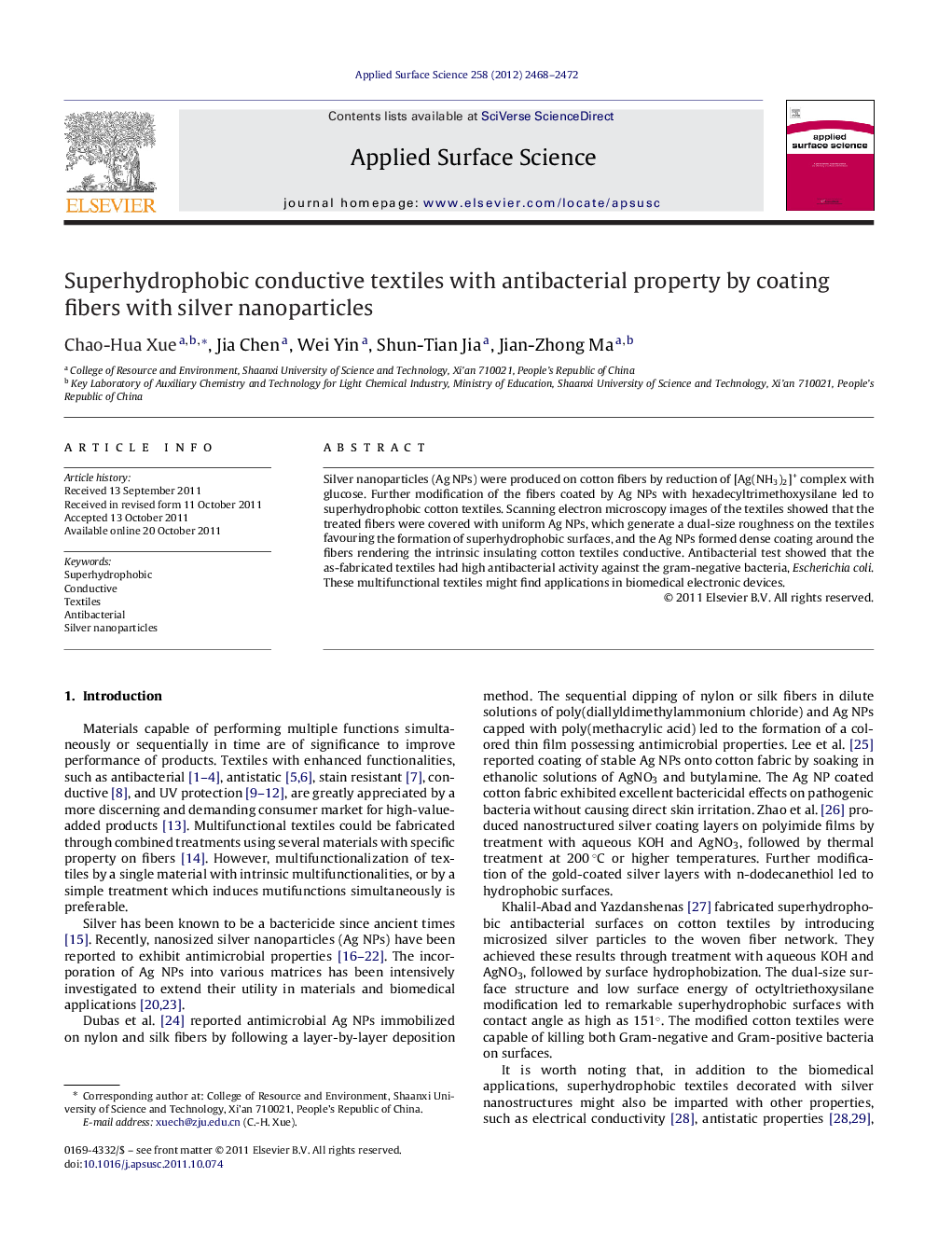| Article ID | Journal | Published Year | Pages | File Type |
|---|---|---|---|---|
| 5366496 | Applied Surface Science | 2012 | 5 Pages |
Silver nanoparticles (Ag NPs) were produced on cotton fibers by reduction of [Ag(NH3)2]+ complex with glucose. Further modification of the fibers coated by Ag NPs with hexadecyltrimethoxysilane led to superhydrophobic cotton textiles. Scanning electron microscopy images of the textiles showed that the treated fibers were covered with uniform Ag NPs, which generate a dual-size roughness on the textiles favouring the formation of superhydrophobic surfaces, and the Ag NPs formed dense coating around the fibers rendering the intrinsic insulating cotton textiles conductive. Antibacterial test showed that the as-fabricated textiles had high antibacterial activity against the gram-negative bacteria, Escherichia coli. These multifunctional textiles might find applications in biomedical electronic devices.
Graphical abstractDownload full-size imageHighlights⺠Silver nanoparticles were in situ produced and coated on cotton fibers. ⺠Silver nanoparticle coated textiles became superhydrophobic after hydrophobization. ⺠Coating of silver on fibers made the textile conductive and antibacterial. ⺠Superhydrophobic multifunctional textiles were fabricated.
